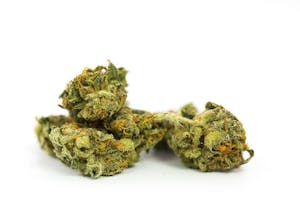
Milan Scientists Discover THC In Ancient Bones
Discoveries in Milan bring light to a longstanding, intricate bond between humans and the cannabis plant.
In a fascinating twist of history, scientists in Milan, Italy, have discovered traces of cannabis in ancient human bones, offering a tangible glimpse into the plant’s enduring presence in human culture.
This remarkable find transcends mere scientific interest, connecting our ancestors and their interactions with the beloved cannabis plant. It provides irrefutable evidence of the cannabis plant and its long-standing role in human societies.
In this article, we unravel the story behind these ancient remnants, exploring their implications and what they reveal about the customs and life of times long gone.
The Discovery
Cannabis use has a rich history, weaving through Greek mythology and Middle Ages medical practices and highlighting its significance throughout the ages. This deep-rooted legacy was brought to light by a recent discovery in Milan: researchers found traces of Delta-9-tetrahydrocannabinol (THC) and cannabidiol (CBD) in the femur bones of two individuals from the 1600s – a woman in her 50s and a teenage boy.
In the Journal of Archaeological Science’s December issue, scientists revealed their analysis of nine femoral bone samples from the 17th-century Ca’ Granda Crypt, located beneath a church connected to Milan’s Ospedale Maggiore, historically a crucial hospital for the poor. This
discovery offers a tangible connection to our ancestors’ use of cannabis, casting new light on its historical roles and cultural significance.
This study aimed to identify plant substances used medically or recreationally by the general populace. It builds on previous research by the same team, which detected opium traces in ancient cranial bones and brain tissue. Interestingly, a review of Ospedale Maggiore’s medical records revealed no mention of cannabis use or its medicinal applications, suggesting a divergence between standard practices and recorded medical treatments.
Cannabis In Ancient Cultures

The discovery of THC and CBD in ancient human bones in Milan is not an isolated phenomenon but rather a window into the widespread use of cannabis in various ancient cultures. Historical records and archaeological findings reveal that cannabis has been an integral part of human societies for thousands of years, serving a multitude of purposes ranging from medicinal to spiritual.
Medicinal Uses
Historically, cannabis was widely used for medicinal purposes. Ancient texts from China, Egypt, and India document its application in treating pain, inflammation, and various disorders. For instance, the Ebers Papyrus, an Egyptian medical text from 1550 BCE, references cannabis as an anti-inflammatory agent.
Spiritual and Ritualistic Use
Cannabis also held significant spiritual importance in several cultures. In ancient India, cannabis was used in religious rituals and was considered a holy plant. The Vedas, sacred Hindu texts, refer to cannabis as one of the five sacred plants. Similarly, in ancient China, it was used in Taoist rituals.
Recreational Use and Social Customs
Besides medicinal and spiritual uses, cannabis was also enjoyed for its psychoactive properties in social settings. Ancient Greek texts mention the use of cannabis, and there is evidence of its use in Scythian ceremonies, where it was likely consumed for its mind-altering effects.
Cultivation and Trade
Cannabis cultivation was widespread in ancient times, indicating its economic significance. It was traded along the Silk Road, connecting various civilizations and cultures. Its fibers were used for making textiles, ropes, and paper, showcasing its versatility beyond medicinal and recreational uses
Cannabis in Ancient Europe
In Europe, the use of cannabis dates back to prehistoric times. Archeological evidence suggests its presence in the ancient Germanic, Celtic, and Thracian cultures. The recent discovery in Milan adds to this narrative, providing direct evidence of cannabis use in Europe during the 17th century, a period when its use was already well-established.
Implications Of The Discovery

The Milan discovery of cannabis traces in 17th-century human remains significantly impacts our perception of the plant’s historical role. This revelation extends beyond the standard view of cannabis as merely a recreational or medicinal herb, suggesting a more profound cultural and ceremonial significance in ancient societies.
Such findings alter our historical understanding and showcase the capabilities of modern archaeological techniques to uncover the past. This research adds a vital chapter to the global story of cannabis, illustrating its widespread historical use across various cultures. This knowledge could potentially influence ongoing discussions regarding cannabis’s legal and societal implications.
Ultimately, this archaeological breakthrough provides valuable insight into the past, enriching our current understanding and guiding future investigations into the multifaceted history of cannabis.
Herb Recommended Products:
READ MORE










